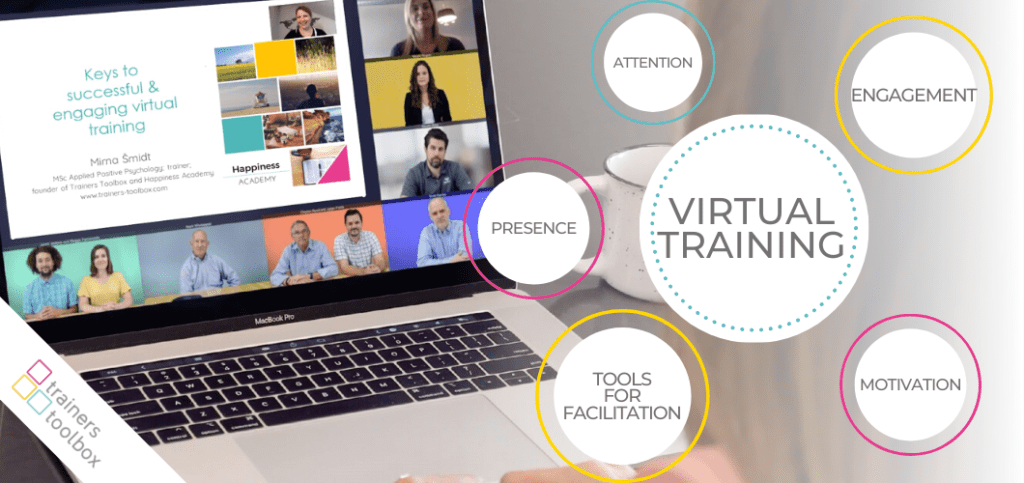Cultivating A Thriving Virtual Training & Onboarding Company Culture

Cultivate A Thriving Virtual Training & Onboarding Company Culture:
Even before the pandemic, the remote and virtual work trend was steadily increasing. Now, the process has been accelerated, and virtual has become the new normal. A recent survey showed that of 500 tech founders:
- On average 70 percent of formerly office-based employees will be permitted to work remotely.
- About 76 percent reported productivity has either stayed the same or improved as a result of working remotely.
Given these results, companies should seriously consider how they will handle virtual training and onboarding in the new remote reality we all live in. The good news is that the answers can revitalize your company.
Establish Leadership Buy-in:
The CEO doesn’t necessarily have to be leading training or onboarding, however, it should be a company priority. Teaming up with your HR team will ensure a smooth transition to virtual onboarding. They must be enthusiastic keeping in mind that training and onboarding are critical elements to a thriving company culture.
Combine E-learning Modules With Gamification:
It’s important to build a library of interactive training modules and videos. One of the advantages to these resources (when cloud based) is that they can be accessed 24/7 from anywhere. This offers employees more training flexibility, and it frees up facilitator time to answer questions and prepare for live video sessions.
Some companies even gamify their training experience by awarding points or badges to those who complete training modules. You might even offer prizes as incentives for people who complete these tasks. Firms such as Walmart, Qualcomm, and PwC have implemented corporate gaming strategy since before 2015. Some results showed a 54% improvement in key metrics such as adverse incident reduction.
There are tons of tools out there (see the lists here, here and here) used to convert training and onboarding into games.
Leverage Efficient Resource Use:
The great thing about digital training and onboarding assets is that they are reusable and accessible. It’s also a good idea to be able to edit training material easily. This allows you to keep everything fresh without having to re-create an entire component from scratch.
For example, LinkedIn Learning (formerly Lynda.com) offers a whole suite of tools and tutorials to create videos for nearly any need. This means you can easily edit any section of a training video without having to film the entire piece over again.
Maintain Periodic Live Video Sessions:
Even though video and game-style tools are great, the best practice is to maintain a human element to virtual training and onboarding initiatives. Given the widespread adoption of video conferencing, this makes live sessions easy to set up. Facilitators should make it a habit to connect via video for any one-on-one training or questions that might come up as well.
Gently insist that participants activate their cameras during the live sessions. Even if we can’t be physically together, seeing the other person’s face helps foster closeness and familiarity among your teams.
Take Advantage Of Analytic Tools:
It’s important to look into how well your onboarding and training are performing. For this reason, there are platforms that enable you to see key indicators such as:
- How many completed learning tasks
- How fast modules are completed
- Level of engagement per session
- Skill growth rate per user
This data not only allows you to identify someone who might need closer support, but it also helps you evaluate your training program’s strengths and weaknesses. Learning management systems like Spoke LMS make the data analytic process fast and easy.
Feedback, Feedback, Feedback:
Words of encouragement go a long way to cultivating a positive environment and healthy company culture. This goes far beyond just a pat on the back though. For instance, giving feedback also reinforces learning which is vital to the success of any training program.
Remember, remote work has its drawbacks too, and one of them is the sensation of digital isolation. If team members feel like they are learning in a vacuum, enthusiasm and retention are likely to suffer. However, if you provide feedback, along with occasional one-on-one video meetings, then it makes your employees feel much more valued.
At Summit Human Capital, we’ve been providing winning solutions for companies and remote job seekers for years. Give us a call and see how we can help you match jobs + talent!